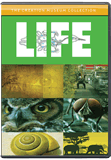Are Adaptations Evidence for Evolution?
Other “Evidence for Evolution” Exhibits
on September 5, 2016Some museum exhibits may attempt to show that a given characteristic of an organism was produced through a gradual series of changes. For example, an exhibit may feature a fish fin turning into a tetrapod leg. This so-called transition is thought to be an adaptation that arose as a fish’s fins adapted to crawling in a shallow stream, thus providing some form of advantage.
Adaptations can be defined as “physical traits or behaviors due to inherited characteristics that give organisms the ability to survive in a given environment.” Biblical creationists consider major structures to be part of the original design provided by God. Modifications to those structures (adaptations) occur due to genetic recombination, and random mutations. These structures do not arise from the modification of similar structures of another kind of animal. As pointed out elsewhere, mutations and natural selection can only operate on existing genetic information—they cannot generate the copious amounts of new information required by evolutionary ideas (for example, the genetic information required to go from a fin to a leg).
Related Downloads
Lesson 23: Have Animals Evolved Part 2
PDF DownloadMuseum Guide
Are you exasperated by all the hype about "millions of years" in secular museums? The Museum Guide will help!
Browse Kids BookRecommended Resources
- © 2024 Answers in Genesis
- Privacy Policy
- Contact
- About




